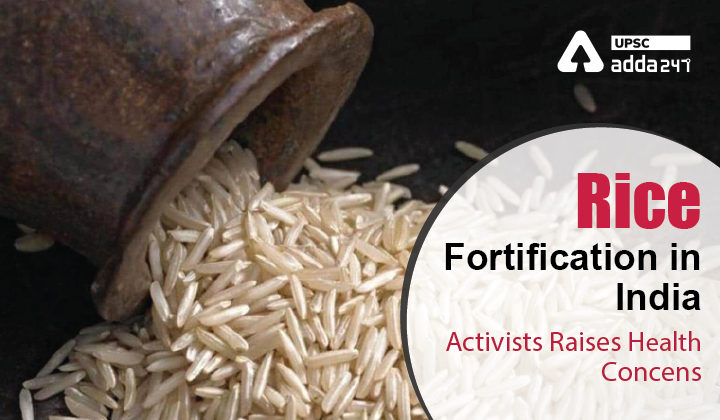Table of Contents
Rice Fortification UPSC: Relevance
- GS 2: Government policies and interventions for development in various sectors and issues arising out of their design and implementation.
Rice fortification in India: Context
- Recently, activists in Jharkhand have warned that distribution of iron fortified rice through government schemes as a “silver bullet” to curb anaemia must stop in States like Jharkhand.
Issues in rice fortification
- Jharkhand has large tribal population that suffer from sickle-cell anaemia, thalassemia, and tuberculosis.
- In this segment of population, overload of iron can create adverse health issues.
- Thalassemia, sickle cell anaemia and malaria are conditions where there is already excess iron in the body, whereas TB patients are unable to absorb iron. Consumption of iron-fortified foods among patients of these diseases can reduce immunity and the reduce functionality of organs.
- The experts have also discovered that neither field functionaries nor beneficiaries had been educated about the potential harms.
- Moreover, there were no warning labels despite the food regulator’s rules on fortified foods.
- The Food Safety and Standards Authority of India’s (FSSAI) Food Safety and Standards (Fortification of Foods) Regulations 2018 require that fortified food packets must mandatorily display the fortification logo (+F),and that every package of food fortified with iron shall carry a warning statement that people with thalassemia may consume it under medical supervision, and persons with sickle cell anaemia are advised not to consume iron fortified food products.
- According to a report prepared jointly by the Alliance for Sustainable and Holistic Agriculture (ASHA-Kisan Swaraj) and the Right To Food Campaign, Jharkhand, where fortified rice is being distributed, consent is not being obtained from beneficiaries.
What is fortification?
- According to Food Safety and Standards Authority of India (FSSAI), it is deliberately increasing the content of essential micronutrients in a food so as to improve the nutritional quality of food and thus improve public health.
- Fortification of rice is a cost-effective and complementary strategy to increase vitamin and mineral content in diets.
भारत में चावल का प्रबलीकरण: कार्यकर्ताओं ने उठाई स्वास्थ्य संबंधी चिंताएं
Food fortification: Why needed?
- High levels of malnutrition among women and children in the country.
- According to the Food Ministry, every second woman in the country is anaemic and every third child is stunted.
- India ranks 94 out of 107 countries and is in the ‘serious hunger’ category on the Global Hunger Index (GHI).
What are the added nutrients in food fortification?
- According to FSSAI norms, 1 kg fortified rice will contain
- iron (28 mg-42.5 mg),
- folic acid (75-125 microgram)
- Vitamin B-12 (0.75-1.25 microgram).
- In addition, rice may also be fortified with micronutrients, singly or in combination, with zinc and vitamin B.
Read current affairs for UPSC





 TSPSC Group 1 Question Paper 2024, Downl...
TSPSC Group 1 Question Paper 2024, Downl...
 TSPSC Group 1 Answer key 2024 Out, Downl...
TSPSC Group 1 Answer key 2024 Out, Downl...
 UPSC Prelims 2024 Question Paper, Downlo...
UPSC Prelims 2024 Question Paper, Downlo...





